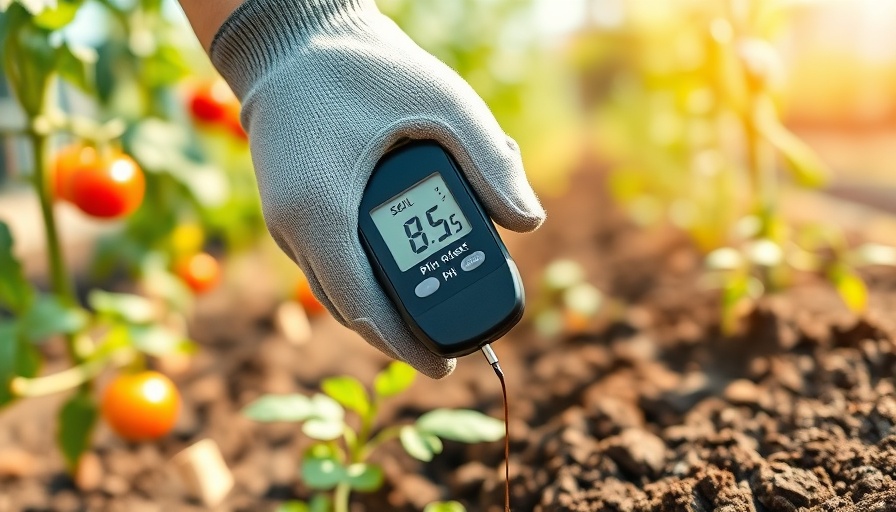
Understanding Soil pH and Its Importance
When cultivating gardens or maintaining lawns, the health of your plants can often hinge on one crucial factor: soil pH. This measure reflects how acidic or alkaline your soil is, ranging from 0 to 14. With most plants thriving in a slightly acidic to neutral pH of 6.0 to 7.0, understanding how to lower soil pH may be essential for ensuring your plants receive the vital nutrients they need for robust growth.
Identifying the Challenges: Why High Soil pH Might Be an Issue
A high soil pH can inhibit a plant's ability to absorb vital nutrients, causing issues like stunted growth or yellowing leaves. Factors impacting soil pH can range from soil composition to local climate influences. For instance, sandy soils might lean more acidic, while clay soils often tend toward alkalinity. Additionally, the use of certain fertilizers can influence pH levels, making it critical to monitor and adjust accordingly.
Effective Methods to Lower Soil pH
Assessing how to lower soil pH can involve both natural and chemical methods. Natural approaches may include the application of organic materials like compost or well-rotted leaves, which introduce acids into the soil over time. Conversely, quick chemical methods may include using sulfur or organic mulches that help adjust the pH levels rapidly.
Testing Your Soil
Testing your soil pH before making amendments is essential to understand your starting point. Options for testing include purchasing a simple soil pH test kit from local garden shops or sending a soil sample to a laboratory for analysis. Many of these kits come with easy-to-follow instructions that help gardeners instantly ascertain their soil's acidity levels.
Maintaining Healthy Soil for Your Property
For homeowners and real estate professionals alike, a flourishing garden or lawn can significantly enhance property valuation. Understanding the essential role of soil pH can empower you to make informed decisions about landscaping. Homeowners considering upgrades or renovations will find that healthy gardens can lead to greater curb appeal, essential for attracting potential buyers. As such, boasting a lush garden can be as important as a well-furnished interior for real estate listings.
Future Trends in Real Estate and Landscaping Practices
As the real estate market continues to evolve, sustainability and environmental consciousness are becoming more pivotal. Incorporating natural landscaping practices can not only help improve soil pH but also increase property values. Buyers are increasingly investing in homes that feature green spaces, showcasing healthy gardens that create a serene atmosphere.
Making Informed Decisions in the Real Estate Market
Understanding how to manage soil health can support property investments. Knowledge of soil pH can inform decisions on what types of plants to introduce in landscaping and can indicate potential problems for real estate appraisal. As a prospective buyer or real estate agent, understanding these factors can help maximize property value while ensuring gardens are both beautiful and functional.
Conclusion: Elevate Your Property's Value Through Soil Management
By acquiring knowledge about soil pH and implementing strategies to lower it where necessary, you can cultivate vibrant gardens and lawns that not only enhance the beauty of properties but also contribute positively to the real estate market. This understanding empowers homeowners to improve their property’s value significantly, setting them apart in a competitive market.
Take action today to boost your garden's health and overall property value. Invest in a soil test and explore methods to improve soil pH—a healthier garden awaits!
 Add Row
Add Row  Add
Add 




Write A Comment